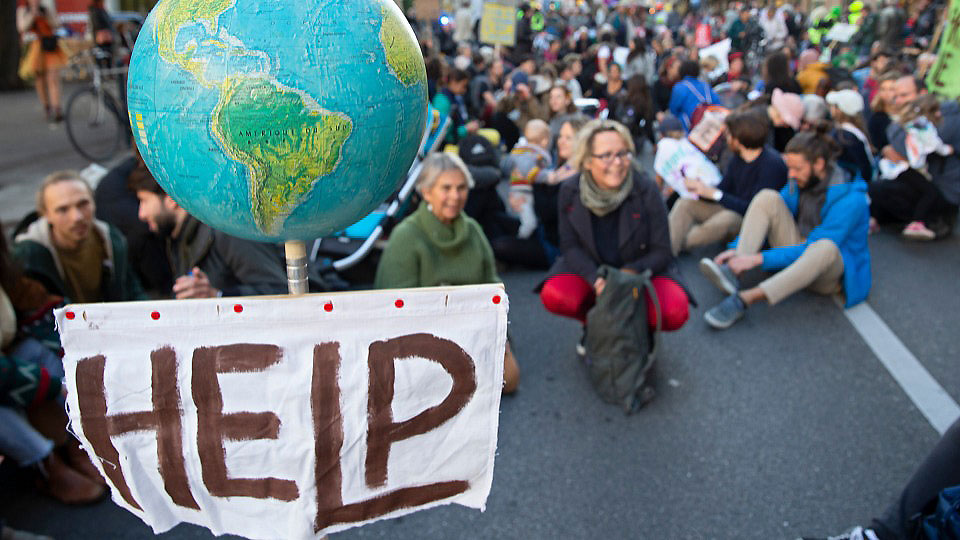
1. Listen to scientists.
Since the 2002 outbreak of SARS, a coronavirus, scientists have repeatedly warned us of a new pandemic. In 2016, the World Health Organization placed coronaviruses in the top eight viral threats, requiring more research.
There was no research because Big Pharma had no profit forecasts at that time. As a result, in 2020 we were totally unprepared for the arrival of SARS-CoV-2, the latest coronavirus.
Even when the pandemic broke out, virologists were hardly listened to. They had predicted that the spread would be exponential and that urgent action was needed. Despite the fact that only a small minority of infected people become seriously ill, the existing capacity of the ICU beds would probably not be sufficient. Unfortunately, the virologists were right.
The vaccination campaign was and is undermined by the utmost possible anti-scientific nonsense. It is mainly spread by the far right. This is often done in a very sophisticated way, and a great deal of money is spent on it.
By the end of 2021, there will be more than 12 million COVID-19 deaths. Many of them could have been avoided. “If there is one thing the pandemic has shown,” according to the Financial Times, “it is the danger of ignoring expert warnings.”
In recent years, climate scientists have been warning us of unforeseeable and irreparable consequences if we do not reduce emissions quickly and drastically. These dire warnings are still not being translated into decisive action.
On the contrary, according to the UN, carbon emissions will increase by 16% by 2030, instead of being cut by half. This halving is necessary to keep global warming below the agreed 1.5°C limit. The UN warns of 2.7°C warming based on national goals now in place.
Lesson one: If we ignore the warnings of the experts, we will pay dearly for it.
2. Face the seriousness and scope.
For a large part of the world’s population, the impact of the coronavirus crisis has been huge: forced quarantine, curfews, closure of schools and entire economic sectors, overrun of hospitals, etc.
That was quite intense, but it is only a foretaste of what might be in store for us with climate degeneration. The pandemic is temporary while the consequences of global warming will be permanent. In the long term, the climate crisis is the biggest threat to our health. But without the option of a vaccine or medicine.
It could upset the entire world order and cause irreversible damage to the planet. Already the consequences of extreme weather conditions are devastating. That will only increase. The pandemic cost us about $16 trillion. The bill for the climate crisis could amount to more than $500 trillion.
Until recently, some people thought that their region would be spared from global warming. The extreme forest fires and rain disasters of the past summer have shattered this illusion. By 2060, about 1.4 billion people could be climate refugees and by 2100, a fifth of the world’s population may be displaced as a result of rising sea levels.
The second lesson, connected with the first, is that we must face the seriousness and scope of what is coming our way.
3. Money is not a problem.
To save the world from climate degeneration, a complete energy transition is needed that is much bigger and faster than any previous one in world history. In the next 30 to 50 years, 90% or more of the world’s energy that is currently produced from fossil fuels will have to be provided by renewable energy sources, nuclear power, or fossil fuel plants that bury their waste rather than emitting it.
This means that in the short term nothing less than a complete transformation of our economy and society is needed to avoid a climate crisis.
Unfeasible and unaffordable? “We are living above our means. Sorry, but there is no money.” They have taught us that for years. Healthcare was too expensive, unemployment benefits were too generous, wages were too high, and there was simply no money for social or cultural matters. The government deficit and debts had to be kept as low as possible, which is why spending had to be reduced on everything.
The coronavirus crisis put an end to that myth. Overnight there seemed to be money and not just a little bit. Over the past year and a half, governments have spent billions as if they were handing out candy. The entire monetary and financial system was directed toward supporting the economy and preserving purchasing power.
In total, governments worldwide spent $16 trillion on support. That is 105 times more than annual development aid. If trillions were suddenly available in 2020 to save the economy and big business from coronavirus, why should it be impossible to save the planet?
According to Energy Transitions Commission, a prestigious think tank on global warming, less than 1% of the world’s GDP is needed annually to become carbon neutral by the middle of this century. This is an insignificant amount to save the world from catastrophic climate change. By comparison, it is estimated that by 2020 to cope with the corona crisis, the entirety of the stimulus packages in the rich countries accounted for more than 30% of GDP.
Lesson Three: Society must respond to the climate crisis with the same urgency and on the same comprehensive scale.
4. The market will not save us.
“The state is inefficient, and the free market solves everything”—that was the dogma of the last 40 years. The best that could be done, therefore, was to privatize and deregulate as much as possible.
During the coronavirus crisis, however, the market failed completely. This was painfully exposed at the beginning of the pandemic by the scarcity of masks and other protective equipment. Fortunately, China was able to cope with many acute shortages. A second time this was dramatically visible in the slow production of the vaccines in the initial phase and in the scandalous distribution of the vaccines worldwide afterwards.
It once again demonstrates that the private sector and market forces are ill-suited to make the best use of existing production potential and to prioritize the most urgent needs. Many services require large up-front investments that are not profitable if they are to be made accessible to all.
In opposition to the market failure, we saw during the pandemic both a dramatic return and rehabilitation of public government. It became visible to everyone that only the state can manage and overcome a crisis of this magnitude.
Major sectors of the economy in several countries were fully or partially nationalized. According to the bombastic claims of Wall Street Journal, economic stimulus in the U.S. was “the biggest step towards a centrally planned economy America has ever taken.”
To date, tackling global warming has largely been left to market forces: emissions trading, carbon taxes, market-based development of green technology, etc. Obviously, this is not a successful strategy.
Sufficient green and cheap energy must become a public service, just like the low-carbon infrastructure and technology needed to deliver that energy. In the past, governments did this for other public services such as defense, public health, education, and scientific research.
Stern Review, an extensive dossier commissioned by the British government, does not mince its words: “Climate change presents a unique challenge for economics: It is the greatest example of market failure we have ever seen.”
Lesson four: To overcome the climate crisis, we must break with market fundamentalism, as some places did during the coronavirus crisis.
5. Countries putting only their own people first is short-sighted.
The global vaccination campaign is characterized by scandalous hoarding behavior on the part of the rich countries. As a result, people from the countries of the South are hardly vaccinated or are receiving shots much too late. According to the UN, by August 30, the 30 poorest countries had vaccinated only 2% of their population, compared with 57% in high-income countries.
Our high vaccination coverage could give us a sense of safety but that is an illusion. Unvaccinated people are also a source of new mutants. This is certainly the case in regions where vaccination coverage is low. Those regions can easily become hotbeds because the virus has so many vulnerable hosts to attack. The longer people remain unvaccinated, the more likely it is that new COVID mutants that are resistant to the vaccines will develop.
Tedros, the secretary-general of the World Health Organization (WHO), describes vaccine nationalism as short-sighted: “No-one is safe until everyone is safe.”
In any case, the “every man for himself” attitude will not do. Overcoming the pandemic requires international cooperation and coordination. “Only the application of principles of universality and equity will be sufficient to enable the world to come out of this crisis together,” says a WHO report.
Like the coronavirus, global warming does not respect borders. But for the countries of the South, the situation in this area is even more dire.
The poorest countries have contributed the least to climate change. Over the last 25 years, almost 50% of global emissions have been caused by the richest 10% of the world’s population. They emitted 18 times more per person than the poorest 50%.
Nevertheless, they will bear the brunt of it. A recent World Bank study estimates that at least 140 million people from Africa, Asia, and Latin America will leave their countries by 2050 due to climate stress.
And those are still conservative estimates. If by the end of this century, possibly a fifth of the world’s population will be displaced because of the climate, hundreds of millions of them will try to reach Europe.
At least two things are needed to prevent a climate disaster. As with the pandemic, international co-operation is indispensable. Cooperation is certainly needed between the two biggest emitters: China and the U.S. The last thing we need now is to stir up a new Cold War against China.
Secondly, the countries most responsible for emissions must assume their historical responsibility. This means that they must make the greatest efforts and also provide resources for the countries of the South. The upcoming summit in Glasgow should provide more clarity on this. In any case, there is still a lot to be done here.
If we are not yet able to vaccinate the world quickly, how will we be able to solve the climate crisis? Lesson five is obvious: Put nationalism aside and go for solidarity and internationalism.










